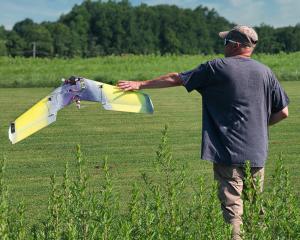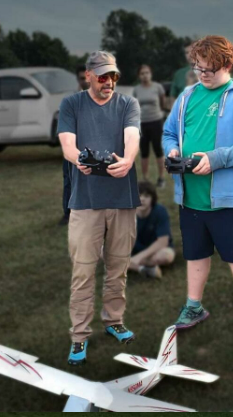
Like many of us, I have fantastic memories of building and flying simple balsa airplanes and model rockets with dad as a kid. We’d fly them (or attempt to) in a big field behind grandma’s house as the sun set on long summer evenings. Tall grass, lighting bugs, and the sound of cicadas seem ever-present in those memories. A lot of hope and excitement was invested in those toys, but success was rare and fleeting. I’m not sure what we were doing wrong, but the experience was nonetheless magical.
As a young adult my life was dominated by career and travel. I am a market researcher, so my job is to understand what makes people buy, and more importantly, what satisfies them to come back for more. Occasionally during this period, I would experience a cycle of piqued interest in RC and visit a local club. I’d watch them fly and inquire how to get involved. It was definitely inspiring, but my rational mind knew all of this was sure to end immediately with an embarrassing and costly disaster! The club members were always welcoming, encouraging, and supportive, but I didn’t really believe …
This all changed when I learned new technology and materials made RC flying much more accessible to beginners. “RC Saylors” YouTube channel added the missing puzzle piece for me. They said: “Even if you have been hesitant in the past, it’s different now. There is new technology making it easier than ever to get started with RC airplanes. You owe it to yourself to try.” My long-held emotional desire to fly RC was now matched with a reasoned argument to try again and a realistic belief that success was closer than ever.
It worked. I searched online and reached out to my local AMA club. They responded within 24 hours. The email was not a generic sales pitch for the club, but an acknowledgment that a) my goal was attainable, b) the club would support and guide me, and c) there were tangible next steps I could take. I have since learned to fly airplanes, sailplanes, helicopters, and drones/multi-rotors. Electric balsa planes are my favorite, while gliders and sailplanes are quickly growing on me. It is a wonderful challenge to continuously improve my RC flying skills and “pay it forward” by training new members to make their dream of flying RC a reality, too.
Since then, I have invested more and more time and effort into my club, Chester County Radio Control Club (AMA #196). As my skills improved, I noticed a few things my club could also improve. We are a friendly and welcoming club of seasoned and safe RC pilots. But, for too long, my club was passive about recruiting new members, building up club resources for the future, or partnering with local organizations to raise our profile in the community. To secure the club’s future, these things needed to change. Club members encouraged me to volunteer in a leadership role and I accepted. I realized from the start that changes could not threaten our friendly and welcoming spirit. I also could not ignore members for whom RC flying is their solitude. We must respect those who prefer to fly alone in peace and quiet and protect their ability to do so responsibly. I am now the President and have focused on expanding places to fly RC in my local community, growing our membership, and increasing awareness of our club by partnering with local organizations such as schools, libraries, museums, and our local parks and recreation department.
I found very quickly that stacking up small changes here and there could have dramatic positive results for everyone. For example, my first suggestion was to use a free mobile messaging app (Slack) to coordinate regular field outings among members. This enabled us to organize a simple fun fly/picnic. Turns out we’re great at picnics! This boosts enthusiasm and offers a set date and time (with free food!) to invite friends, family, and community partners.
To promote our picnics, we improved our website and social media presence. Soon, we grew our membership by over 50% and expanded our club to include 4 flying sites (all FRIAs) to keep any one of them from become crowded or over-used. With all the new members, we re-vamped our flight training program based on best practices found through AMA’s Introductory Pilot Program.

To promote our free RC flight training, we began hosting a series of introductory presentations at the local library. This inspired us to expand the list of host venues to include local museums, schools, and government buildings by partnering with our local parks and rec department. Next, we imagined other fun programs to host at these venues, like hand-tossed glider and drone building workshops for kids and adults. The early test run was a hit with parents, so we’ve agreed to schedule more through parks and rec.
They charge a nominal registration fee and share a portion with us, which generates extra revenue for the club treasury. Necessarily, we created a “youth development program” with volunteers to manage these community education programs and events, and promote them to our local school board, civil air patrol cadets and scout troops, etc.
I’m so glad I followed through with model aviation. It is a wonderful hobby that is as joyful as it is challenging. I am surprised how rewarding the social and leadership aspect has been for me. This is particularly true when sharing the hobby with beginners and novices in my community, especially children and youth who can be surprised to discover their own capabilities and potential. The knowledge, skill, confidence, and self-esteem gained from this hobby is truly priceless for some. I count myself among them and am honored to share such a gift whenever I can.


